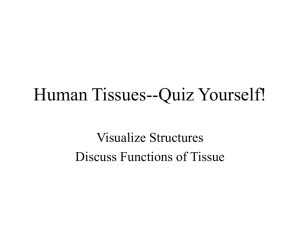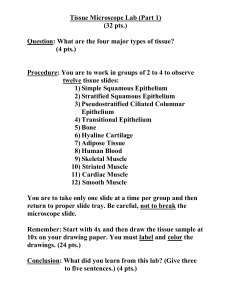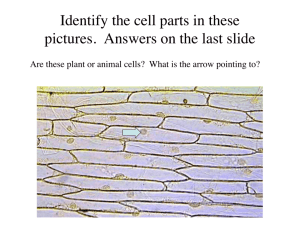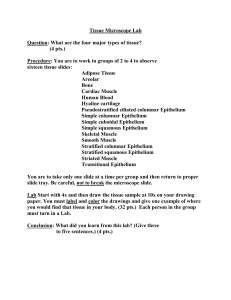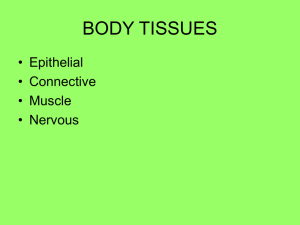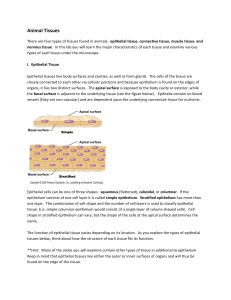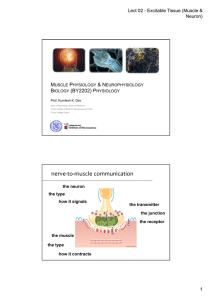ZOO 1010L Handout – Vertebrate Tissues
advertisement
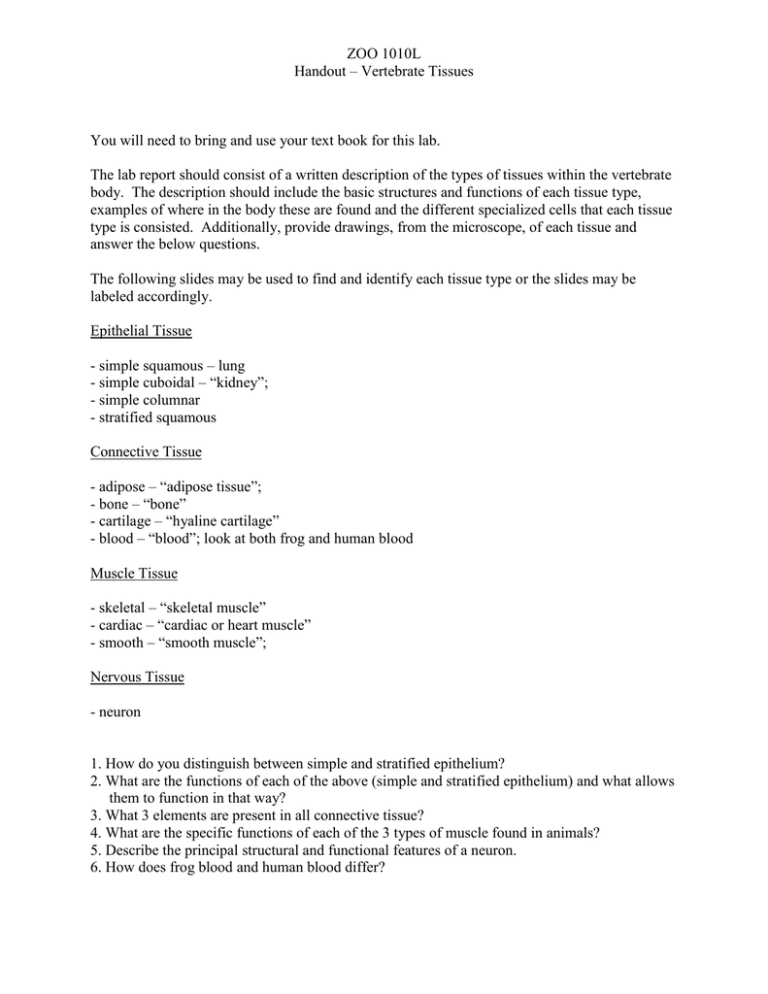
ZOO 1010L Handout – Vertebrate Tissues You will need to bring and use your text book for this lab. The lab report should consist of a written description of the types of tissues within the vertebrate body. The description should include the basic structures and functions of each tissue type, examples of where in the body these are found and the different specialized cells that each tissue type is consisted. Additionally, provide drawings, from the microscope, of each tissue and answer the below questions. The following slides may be used to find and identify each tissue type or the slides may be labeled accordingly. Epithelial Tissue - simple squamous – lung - simple cuboidal – “kidney”; - simple columnar - stratified squamous Connective Tissue - adipose – “adipose tissue”; - bone – “bone” - cartilage – “hyaline cartilage” - blood – “blood”; look at both frog and human blood Muscle Tissue - skeletal – “skeletal muscle” - cardiac – “cardiac or heart muscle” - smooth – “smooth muscle”; Nervous Tissue - neuron 1. How do you distinguish between simple and stratified epithelium? 2. What are the functions of each of the above (simple and stratified epithelium) and what allows them to function in that way? 3. What 3 elements are present in all connective tissue? 4. What are the specific functions of each of the 3 types of muscle found in animals? 5. Describe the principal structural and functional features of a neuron. 6. How does frog blood and human blood differ?


